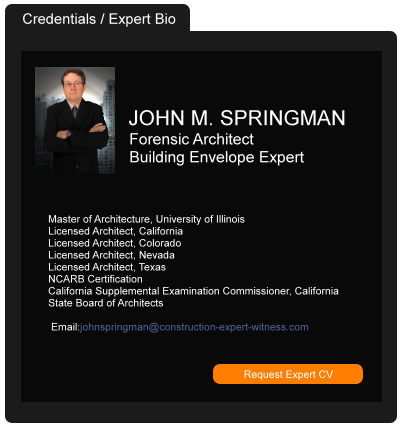You Can Now Build a Multi-Million Dollar Home via Your iPad
January 07, 2015 —
Sara Pepitone – BloombergThere are apps for real estate sales, apps for paint color, apps for arranging furniture, and apps for making the best use of natural light. But until now, there was no app for that most fundamental process of homesteading: creating a new one from scratch. In the coming weeks Al Hamra Real Estate Development will unveil its all-inclusive Home Builder app.
All you need is an iPad and five million UAE Dirham ($1.36 million), to start. Swipe and spend has never been so elite.
Designed by A++ Architecture Design and Communication, Home Builder starts with property acquisition and ends with finishes and furnishings. Well, to be precise, it ends with a form sent to a sales person to calculate a price to purchase. This means less time and fewer people and permits in your way, plus a more gratifying (literal) hands-on experience in the process.
Read the court decisionRead the full story...Reprinted courtesy of
Sara Pepitone, Bloomberg
Economic Damages and the Right to Repair Act: You Can’t Have it Both Ways
March 16, 2017 —
Garret Murai – California Construction Law BlogIn 2002, the California State Legislature passed Senate Bill 800 also known as the Right to Repair Act (Civil Code Sections 895 et seq.) in an effort to stem a then rising tide in residential construction defect litigation.
SB 800, which applies to newly constructed residential units including single-family homes and condominiums (but not condominium conversions) sold after January 1, 2003, was intended to curb residential construction defect lawsuits by giving developers and others in the construction chain an opportunity to repair construction defects before being sued in court. SB 800 also provides minimum construction standards and limits the time in which a homeowner can bring a claim for construction defects.
In Acqua Vista Homeowners Association v. MWI, Case No. D068406 (January 26, 2017), the California Court of Appeals for the Fourth District examined the circumstances in which homeowners can sue a material supplier under the Right to Repair Act.
Read the court decisionRead the full story...Reprinted courtesy of
Garret Murai, Wendel Rosen Black & Dean LLPMr. Murai may be contacted at
gmurai@wendel.com
Developer’s Fraudulent Statements Are His Responsibility Alone in Construction Defect Case
February 10, 2012 —
CDJ STAFFThe Texas Court of Appeals ruled on December 21 in the case of Helm v Kingston, a construction defect case. After purchasing what was described as “an extremely well-built” two-bedroom townhouse, Mr. Kingston made complaints of construction defects. Greenway Development did not repair the defects to Kingston’s satisfaction, and he filed notice of suit. In his suit, he claimed that GDI and its president, John Helm, had committed fraud and negligent misrepresentation. Kingston claimed that Helm “fraudulently induced Kingston to believe that the townhouse evidenced the highest quality of workmanship when in fact the quality of workmanship was atrocious.” Helms brought a counterclaim that Kingston’s suit was frivolous.
�About four years after Kingston purchased the townhome, the suit proceeded to trial. The trial court determined that Helm was not “liable in his individual capacity,” but this was reversed at appeal.
�A second trial was held ten years later on the question of whether Kingston’s unit was a townhome or an apartment. A jury found that Helm “engaged in a false, misleading or deceptive act or practice that Kingston relied on to his detriment.” Kingston was awarded $75,862.29 and an additional $95,000 in attorney fees by the jury. Helms made an unsuccessful appeal to the Appeals Court, after which Kingston was awarded an additional $10,000. Helms then made an unsuccessful appeal to the Texas Supreme Court, which lead to an additional $3,000 for Kingston. There was also a verdict of $48,770.09 in pre-judgment interest and “five percent post-judgment interest accruing from the date of the judgment until the time the judgment is paid. Helm appealed.
�In his appeal, Helm raised seven issues, which the court reorganized into five Kingston raised one issue on cross-appeal.
�Helms’ first claim was that Kingston “failed to satisfy the requirement of” Texas’s Residential Construction Liability Act and that by not filing under the RCLA, Kingston’s fraud and misrepresentation claims were preempted. Further Helms claimed that the RCLA limited Kingston’s damages. The court rejected this, as the RCLA deals with complaints made to a contractor and not only did Helm fail to “conclusively establish” his “status as a ‘contractor’ under the statutory definition,” Helm testified that he was “not a contactor” at the pre-trial hearing.
�Helms’s second claim was that Kingston’s later claim of a misconstructed firewall should be barred, claiming that Kingston “‘had knowledge of a defect in the firewall’ as early as 1997 but did not assert them until 2007.” The court rejected this because Kingston’s claim was that “Helm ‘fraudulently induced Kingston to believe that the townhouse evidenced the highest quality of workmanship when in fact the quality of the workmanship was atrocious.’”
�Helms also challenged whether his statements that the residence was of “good quality” constituted fraud and misrepresentation under Texas’s Deceptive Trade Practices-Consumer Protection Act. The court concluded that Helm was in a position to make knowledgeable statements and further that “residential housing units are not artistic works for which quality is inherently a matter of subjective judgment.” Helm also claimed that Kingston could have avoided certain repair expenses through the “exercise of reasonable care.” Helms argued that the repairs could have been made for $6,400. The court disagreed, as these claims were cited only to invoke the DTPA, and that later petitions established additional defects.
�Helms’s next claim was that he was not allowed to designate responsible third parties. The court rejected this because there GDI represented matters concerning the residence only through Helm’s statements. The court noted that “Helm is correct that?third parties may be liable for fraud if they ‘participated in the fraudulent transactions and reaped the benefits,’” but they note that “Helm never specifically alleged that GDI or CREIC participated in Helm’s alleged fraudulent transactions.
�The final issue in the decision was about court costs, and here the court denied claims on both sides. Helm argued that the award of legal fees were excessive, as they exceeded the actual damages. The court noted that they “may not substitute our judgment for that of the jury,” and also that “the ratio between the actual damages awarded and the attorney’s fees is not a factor that determines the reasonableness of the fees.” But the court also rejected Kingston’s claim for post-judgment interest on $10,312.30 that Helm had deposited in the trial court’s registry. The court noted that the monies were to be paid out upon final judgment, but the mandate did not include any reference to interest.
Read the court’s decision…
Read the court decisionRead the full story...Reprinted courtesy of
Introducing Nomos LLP!
December 30, 2019 —
Garret Murai - California Construction Law BlogWe’ve been quiet lately we know.
We’ve been nesting. Not the alien popping through your stomach kind of nesting, although, there have been a few white knuckled “what the heck did we get ourselves into!” moments. Rather, we’ve been quietly building something we think is pretty great. Not just for us, but for our clients.
Our own law firm. So here’s the 411:
What’s with the name Nomos LLP?
We’ve gotten a few questions about that. We wanted to create a client-centric law firm not a lawyer-focused one. Hence, no last names. Plus, we don’t have cool last names like Low, Ball & Lynch or Payne & Fears. The name “nomos” is Greek for “law.” And, of course, it’s from the Greeks that much of modern Western legal system is derived. Simple. Opa!
Read the court decisionRead the full story...Reprinted courtesy of
Garret Murai, Nomos LLPMr. Murai may be contacted at
gmurai@nomosllp.com
Engineer Pauses Fix of 'Sinking' Millennium Tower in San Francisco
September 13, 2021 —
Richard Korman - Engineering News-RecordEngineers paused work for at least two weeks on the $100-million foundation upgrade for San Francisco's 645-ft-tall Millennium Tower high-rise residential condominium after measurements showed increased settlement during the installation of pile casings for the new piles.
Reprinted courtesy of
Richard Korman, Engineering News-Record
Mr. Korman may be contacted at kormanr@enr.com
Read the full story... Read the court decisionRead the full story...Reprinted courtesy of
Pennsylvania: Searching Questions Ahead of Oral Argument in Domtar
October 08, 2014 —
Robert Caplan – White and Williams LLPIf you have been following our coverage of Liberty Mutual Insurance Company v. Domtar Paper Co., you will recall that the Supreme Court of Pennsylvania decided on May 29, 2014 to hear the subrogated insurer’s appeal,1 despite the Superior Court’s holding against the subrogated insurer—based primarily on its own defective case law2 —and its denial of reargument, presumably due to the insurer’s briefing follies.3
The parties in Domtar, as well as numerous amici curiae (friends of the court),4 have submitted their respective briefs over the last few months, and the Supreme Court has scheduled oral argument to take place on October 8, 2014 in Pittsburgh, Pa. The Court has framed the issue as: “Does Section 319 of the Pennsylvania Workers’ Compensation Act, 77 P.S. § 671, allow the employer/insurer to step into the shoes of the insured employee to subrogate against the tortfeasor?”5
There are three possible outcomes in Domtar.
The first (and easiest) possible outcome for the Supreme Court would be to punt to the Pennsylvania General Assembly for a decision on the issue. Workers’ compensation legislation, perhaps more than any other type of legislation, “creates a highly structured balancing of competing interests.”6 It is basic civics that the legislature has a “superior ability to examine social policy issues and determine legal standards so as to balance competing concerns.”7
Read the court decisionRead the full story...Reprinted courtesy of
Robert Caplan, White and Williams LLPMr. Caplan may be contacted at
caplanr@whiteandwilliams.com
Traub Lieberman Partner Kathryn Keller and Associate Steven Hollis Secure Final Summary Judgment in Favor of Homeowner’s Insurance Company
April 02, 2024 —
Kathryn Keller & Steven A. Hollis - Traub LiebermanTraub Lieberman Partner Kathryn Keller and Associate Steven Hollis obtained summary judgment on behalf of a major homeowners’ insurer in a breach of contract action in the Ninth Judicial Circuit in and for Osceola County, Florida. The underlying claim involved a water loss in a bathroom of the Plaintiff’s property allegedly resulting in substantial damage to the home. The claim had been reported by Plaintiff’s counsel. The Plaintiff had retained counsel and two vendors before giving notice to the insurer. In addition, the insurer’s field adjuster was not provided the opportunity to inspect the plumbing parts that had been allegedly damaged. Specifically, the drainage system had been completely removed and replaced. The insurer retained an engineer, who concluded that the removal of the original plumbing components hindered the ability of the engineer to determine their conditions prior to removal. Meanwhile, the surface conditions of the white PVC pipe appeared bright and shiny as compared to other piping. The insured had also failed to provide a signed, sworn proof of loss within sixty days after the loss.
Reprinted courtesy of
Kathryn Keller, Traub Lieberman and
Steven A. Hollis, Traub Lieberman
Ms. Keller may be contacted at kkeller@tlsslaw.com
Mr. Hollis may be contacted at shollis@tlsslaw.com
Read the court decisionRead the full story...Reprinted courtesy of
Carillion Fallout Affects Major Hospital Project in Liverpool
October 30, 2018 —
Peter Reina - Engineering News-RecordManagers of a 90%-complete, 646-bed hospital in Liverpool will take charge of the project after unravelling a public-private partnership with the contractor Carillion Plc, which collapsed ignominiously in January (ENR 1/22 p. 12). Following cancellation of the contractor’s other large U.K. hospital P3, near Birmingham, project lenders face large losses.
Read the court decisionRead the full story...Reprinted courtesy of
Peter Reina, ENRMr. Reina may be contacted at
reina@btinternet.com


































































